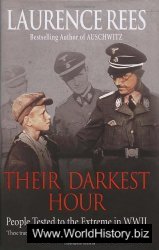As we saw previously, the first Bundist cell in Kiev was founded by students in 1900 eager to mobilize the city's Jewish workers. This was relatively late, but it was difficult to organize in Kiev because of legal restrictions on Jewish settlement; moreover, the Bund was less popular in the south of Russia than in the Lithuanian and Belorussian provinces because Ukraine was less industrialized and working conditions were generally better. According to 1897 statistics, Jews made up 38.1 percent of the urban population in the southwest as opposed to 57.9 percent in the northwest.12 Still, laboring Jews were much more likely to have a "class consciousness" than the peasants who worked in the factories and mills of the capitals and the Donbass region, "most of whom retained ties to the countryside" and did not form a clearly delimited, self-conscious working class.13 Before the founding of the Bundist Frayhayt in Kiev, Gomel, in the Belorussian province of Mogilev, was the southernmost city to have a Bund committee. As Henry Tobias notes, for the students in Kiev "the Bund was at once an answer to their Zionist opponents and the perfect wedding of their ideology and their feelings of Jewishness."14 By 1903 the group was already in rivalry with other activist groups, as revealed by a letter from Chaim Khazatskii of Kiev to Fania Gotkina of Bobruisk, written in August 1903 and intercepted by the secret police, which referred to a dispute between Zionists and Bundists in Kiev.15 Another rival was the Jewish Comradely Union {Evreiskii tovarishcheskii soiuz), which Nathans describes as "a mutual aid society as well as a forum for discussion and debate"; at a meeting that year, Bund activists apparently held a meeting to deliberate about whether the Union should exist—not surprisingly, the answer was no.16 After the pogrom in Smela in 1904, Bundists distributed a leaflet explaining that the government's antisemitic policies were a tool of oppression of the bourgeoisie over the entire working class, in an attempt to divide and weaken the working class. Interior Minister Plehve, argued the leaflet, had orchestrated the pogroms in order to fight with the working class.17 The Bundists continued their activities in the revolutionary months of 1905. For example, they organized demonstrations in Podol in mid-June together with local Social Democrats and distributed a leaflet in October arguing that the oppression of the Jews was part of tsarism's counterrevolution, which actually oppressed all people.18 However, as Michael Hamm writes, "the Kiev Bund seemed more effective in organizing Jewish workers in the smaller towns outside of Kiev than it did in Kiev itself."19 As we have noted, this may well have been because of the logistical challenges involved in organizing in a city where restrictions on Jewish activities were much harsher and more severely applied than in localities in the Pale.
Autonomists and Socialist Zionists such as the Poalei-Tsion had begun to be active in Kiev just after the Bund cell was established. In the first years (1901-1902), there was no united organization but only individual cells in cities, including Kiev, which hosted the Vozrozhdenie (Renaissance) conference in 19 0 3.20 The SERP/Seimist party—"the smallest of the three new [labor Zionist] parties"—was established in Kiev in April 1906.21
Like Zionists throughout the Pale of Settlement, Kiev's Zionists began to "reactivate" in the wake of the revolution, hoping to seize their share of Jewish political energies, now made easier with the Zionist turn toward Gegen-wartsarbeit (cultural and political work among Russian Jewry), which enabled Zionists to demonstrate to the Jewish street that they were relevant to the current situation and pressing political tasks in the here and now. The Russian-language Zionist newspaper Evreiskii narod reported in November 1906 that, after a long period of inactivity, a new board had been elected to lead the growing numbers of local members and head up activities that would "fulfill the demands of the Central Bureau."22 The newly independent Territorialists, led by Mandel’shtam, a global figure in the movement, also showed new vigor by holding a conference in Kiev in February 1906, at which a new organization was established.23 From January 1907, Kiev was also the headquarters of the Territorialists' new Jewish Emigration Society (Evreiskoe emigratsionnoe obshchestvo), which worked together with the ITO (Jewish Territorialist Organization), the German-Jewish Hilfsverein, the U. S. Industrial Removal Office, and a group of wealthy New York Jews led by banker Jacob Schiff to send emigrating Jews to the port of Galveston, Texas, whence they could be settled in the American West.24 After Mandel’shtam's death in 1912, Lev Brodsky replaced him as president of the society, evidence of the latter's loss of faith in a future granting of full rights to Russian Jews.25
Who were the new activists? They might best be described as radical members of the intelligentsia—or, as they are often referred to in contemporary sources, the "radically inclined" (radikal’no nastroennye). Otto Muller argues that there is no single definition of the intelligentsia, and that it is more a "self-image" than an actual group or a "moral code." In the Russian context, intelligenty have been defined as "various groups of writers and politically active men in Russian society," which bears some resemblance to the Jewish situation, though it is too narrow a definition.26 Not only were there women among the new generation of activists, but also many polu-intelligenty, such as schoolteachers, fel’dshers (something like a physician's assistant or nurse-practitioner), and professionals (perhaps what we might call "activist professionals").27 This helps to explain why, as we shall see, the new Organization of Jewish Teachers was so heavily involved in the struggle over the OPE—as Wirtschafter explains, "the impulse to organize [professionally] often assume[d] an oppositionist character"; only here it was in opposition to the Jewish establishment and not to the government. There is also a question of socioeconomic class, and Haimson's definition is thus particularly helpful:
[The intelligenty's class] identities were fluid and fluctuating, depending on the particular representation of their group identity that they felt most appropriate at any given point. The intelligenty could be middle-class me-shchane, or they could be the thinking head of the Jewish [working-class] masses, a title that they often appropriated for themselves. Moreover, these intelligenty offered to their putative "followers" (i. e., the masses) one of a number of possible representations of identity. Would they be the Jewish masses? the toiling Jewish workers? the national masses? etc.28




 World History
World History









